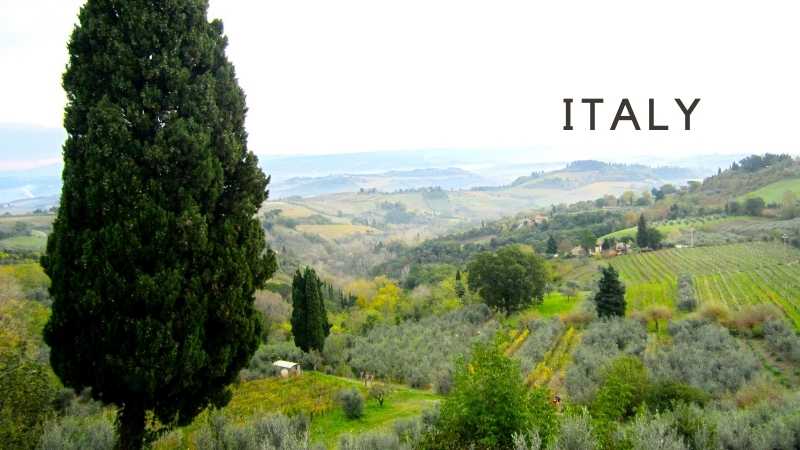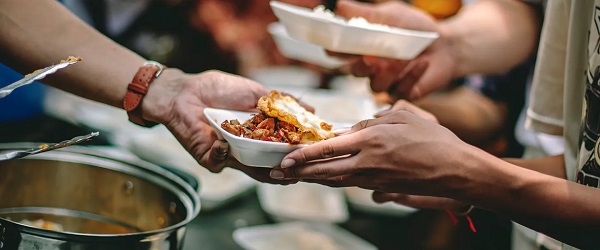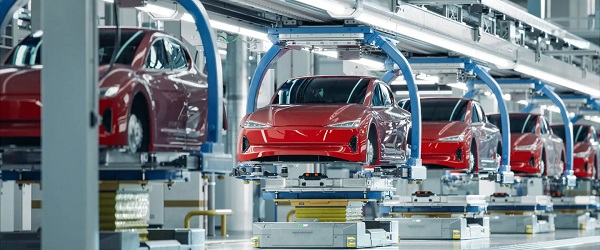Business
My European Favourites – Emilia-Romagna, Italy


My European Favourites – Emilia-Romagna, Italy
When people think of Italy, the first places that usually come to mind are Rome, Venice, Milan and the region of Tuscany, which includes Florence and Pisa. I would go to any of these places in a heartbeat. I love them all, but a region that many tourists overlook is Emilia-Romagna. The region’s name might not be well known, but its exceptional agricultural, automotive and mechanical sectors are known the world over.
Much of the gastronomy we associate with Italian cuisine has its roots in Emilia-Romagna. The region is famous for Parmigiano Reggiano (Parmesan cheese), Modena balsamic vinegar, Parma ham (prosciutto), and various types of pasta, just to name a few items. If you are a wine lover, Sangiovese and Lambrusco are two of their well-known “vinos” for their unique taste and quality.
If you are a motor sport buff, Ducati motorcycles and luxury car manufacturers Lamborghini, Maserati and Ferrari all have their roots in the area. With this racing heritage, it’s only natural that two major circuits are located in the region. The motorcycle racing Misano World Circuit Marco Simoncelli is located near Misano Adriatico and is named after a local rider who died during a race in Malaysia in 2011. The Autodromo Enzo e Dino Ferrari located in Imola, which has been used for Formula 1 Grand Prix races, is named after Ferrari’s founder and his son. The track is sadly the location where three time World Champion Ayrton Senna of Brazil died in 1994.
It is best to do these tours with Parma as your base in Emilia-Romagna, but I enjoy its capital and largest city, Bologna. The city is Italy’s seventh largest with about 400,000 people, and it is famous for its medieval towers, churches, colonnades and historical city centre. The University of Bologna, which was established in 1088 AD, is the oldest university in the Western world. I love exploring the narrow city centre streets and browsing the food markets and shops with fresh produce, cured meats, fish, breads, pastas and regional products. I’m no chef, but I imagine that it would be sensory overload for any culinary expert. The small restaurants with street front patios make some of the best dishes you will eat in all of Italy. You have to go there.

Bologna’s medieval towers, a colonnade, a street full of restaurants and the Neptune Fountain.
Parmigiano Reggiano
We depart in the morning from our hotel in central Bologna to a family cheese making operation that produces the “king of cheeses,” Parmigiano Reggiano. The just over an hour drive brings us to a farm and factory near the town of Parma. They are members of the consortium that designates and controls authentic Parmigiano Reggiano production. Under law, the designation Parmigiano Reggiano is protected as a PDO (Protected Designations of Origin) and can be used only by certified producers from this area, so consumers know they have the real deal.
Around 1000 AD, monks reclaimed the marshy lands in the Po valley. The fertile land was plowed and worked by the monks using cows. With numerous cows, the monks had to invent a method to preserve the large quantities of high-quality milk they produced into a product that could be stored and used over time. The monks eventually developed a technique to produce a distinctive cheese in large boilers. The large round Parmigiano Reggiano is still made the same way today.
The Minardi family own and operate the Borgo del Gazzano farm factory that we are visiting. As an organic farm, they pay close attention to the entire local supply chain process to ensure the highest quality of ingredients. We arrive as they are reaching their final steps of the boiler process that was perfected by the monks long ago. Two men collect the curd from the boiler using muslin cloth and place it in large round molds. The cheese is left to set for a day or two then the mold will be removed to add a plastic wrap that has the imprint of the famous Parmigiano Reggiano stamp along with the date and the producer’s number. The mold is then reattached over the plastic wrap and tightened. The imprint from the wrap will solidify as a permanent mark on the rind over the next day. The wrap and mold are then removed and the cheese is placed in a rectangular vessel filled with a brine mixture for 20-25 days so that the cheese can absorb salt.

Production boilers, collecting the curd, the cheese freshly set in a mold and the brine bath.
Finally, the cheese is placed on a shelf in the warehouse to age for 12 months. Prepare to be astounded to see row after row of these shelves that are over 20 cheeses high and at least 80 cheeses long per side. It feels like a library made of cheese! Do you hear a mechanical sound coming from the next aisle? It is a machine working its way up, down and across the shelves. Its job is to grab one heavy cheese off the shelf at a time, spin it around so it can brush off the excess bits, flip the cheese, then place it safely back on the shelf, before automatically moving on to the next one. I guess now we know where they get the parmesan cheese shavings for the cheese shakers we buy at our local grocery store.
We will step outside to the barn area to see the cows and dairy operation before moving to the tasting area and shop. Tasting the celebrated “fromaggio,” with its distinctive texture and sharp flavour, at the very place where it is produced is really something special. This is not to be mistaken with the cheese we often get at home, as outside of Europe, companies can only use the word “Parmesan” to describe their cheese. To get the real deal, you have to make sure that it is clearly sold as, or even better, see it stamped as Parmigiano Reggiano.

Parmigiano shelves, the stamp on the rind, the cleaning machine and me with Alfonso Minardi.
Parma Ham (Prosciutto)
Just 30 minutes from the Borgo del Gazzano is a producer that makes another iconic food. The Lanfranchi family are specialists in the making of a cured meat known the world over as Raw Parma Ham (Prosciutto Crudo di Parma). For 20 years, they have been selecting the finest raw materials and using their traditional methods and expertise to produce the finest and tastiest prosciutto, salamis, pancetta, culatello and coppa di parma. Like the Parmigiano Reggiano cheese producers, the Parma Ham producers are also part of a consortium, and as such, must adhere to high standards and follow precise rules of production.
We will get an introduction of the prosciutto making process. Our tour starts with the trimming of the excess fat and rind of the pork thigh to give the ham its rounded shape and to assist in the salting process. The rind is treated with wet salt while the lean parts are sprinkled with dry salt. During a three week period, the ham is salted twice and placed in walk-in freezers with different temperatures. During this period, it slowly absorbs salt, loses moisture, and loses about 4% of its weight.

Our guide explaining the production process, the ham cellar and the “5 point crown” stamp.
In the next stage, the ham’s residual salt is removed and it is placed in a special room with controlled humidity and temperature for just over two months. While in this room, the salt penetrates even deeper and it is reduced by another 8-10%. We continue into a room with windows that are opened for the ham to dry over the next few months in natural process that will result in another weight loss of 8-10%.
The ham’s final move is to the cellar on the seventh month. In the cellar, important biochemical and enzymatic processes occur. Here it loses another 5% of weight but gains the distinct aroma and taste of the Param Ham.

The finished La Perla Prosciutto, a mixed plate of their products and me with Mr. Lafranchi.
At the end of the curing process, the ham is penetrated by a horse bone needle by experts who can verify its quality with a trained sense of smell. Finally, after a twelve month journey, the ham is inspected by the Parma Quality Institute and branded with the “5 pointed crown” as a guarantee to the consumer that the product is of the highest quality.
The tour gives us a great appreciation for the care that goes into making these products, and underscores why they are highly sought after. We move to the La Perla tasting room where we can try some of the local wines while enjoying lunch, which of course, includes pasta, cured meats, prosciutto, Parmesan cheese, bread and a dessert. It is always tough to get a group to leave because the Lafranchi family are great hosts who love to meet people from around the world. But we must leave, as one hour away, is a mecca for car enthusiasts.

The red arch at the Ferrari Museum entrance, the Ferrari 330 P3 and the AF Corse # 51.
Ferrari Museum
As we arrive at Maranello, we are greeted by a traffic circle that has a familiar silver prancing horse in the middle. This is undeniably, the home of Ferrari. Founded by Enzo Ferrari in 1929 as Scuderia Ferrari, the company sponsored drivers and manufactured race cars before moving into production of street-legal vehicles as Ferrari S.p.A. in 1947.
As we arrive to the Museum, we see a F1 race car in what looks like scaffolding and a welcoming bright red arch. Ferrari is the most successful Formula 1 team in history and has millions of loyal and exuberant fans worldwide. The motorsports cars in the museum are dedicated to the 90 years of Ferrari racing heritage. The cars will take your breath away.

The “Prancing Horse” logo, a 1950’s vintage race car and a classic Ferrari.
My favourite area of the museum is the Michael Schumacher exhibition dedicated to his 11 years of racing with Ferrari. The room has some of his F1 race cars on display in an awe-inspiring semi-circle with a video wall in the background playing highlights of his career. On the other side of the room is a lower wall dedicated to Ferarri champion drivers and an upper wall full of shiny trophies.

A few F1 cars from the Michael Schumacher exhibition, Ferrari champions and the trophies.
In addition to the racing automobiles, the museum also displays its most famous street cars through history, including the iconic Ferrari Testarossa. The Ferrari shop is full of items with the iconic item emblazoned on them, but like the high performance cars, they are pricey.

A Ferrari Portofino, a LaFerrari Aperta, and the Ferrari 5999 HY-KERS test “MULOTIPO.”
With your adrenalin pumping from being surrounded by automotive power, you will be ready to try a couple of unique experiences. If you are mechanically inclined, you will love the Pit Stop Experience, where they time you as you make a front tire change on a Formula 1 car. Those that “feel the need for speed” will drool at the sight of the unbelievable Scuderia Ferrari F1 simulators. After you climb into the pilot’s cockpit, you are given a brief explanation of how to use the paddles behind the steering wheel and the gear box. They can set up the simulator for regular driver or in a more advanced mode for “professionals.” You even get to choose one of the famous F1 tracks for your race experience. The simulator lets you feel the track surface including rubbing strips feel the breaking and throttle forces.
If you are interested, you can combine the museum ticket with a tour of the Ferrari track and factory. For the duration of the tour, you must remain on the company’s shuttle buses and no photos or video are allowed. The factory entrance has been kept the same as it was in 1947 and the track is where all of Ferrari’s competition and road cars have been tested since 1972.
Those that want to get behind the wheel can go to the nearby Autodromo di Modena race circuit and drive a Ferrari for 15 minutes or longer. The experience includes track information and safety protocols from a professional driver.

The tire changing Ferrari Pit Stop Experience and the Formula 1 racing simulators.
Balsamic Vinegar
After the heart racing Ferrari experience, we make a short early evening drive to a Balsamic Vinegar producer or “Acetaia” that was founded in the 1800s. The Paltrinieri Acetaia, established in 1845, maintains the family tradition and replenishes over 1000 barrels of balsamic using the experience handed down generation after generation. Adhering to the strict regulations and using local ingredients from the Trebiano and Lambrusco vineyards, Guido Paltrinieri guides the production of the vinegar must.
The company harvests 160,000 kilograms of grapes on their 25 acre farm, which produces 15,000 litres of balsamic vinegar. We will visit the warehouse attic to see the medium sized barrels made from durmast, chestnut, mulberry, cherry, acacia, ash and precious juniper wood.
The flavour garnered from the barrels, along with the aging process, result in the unique scent and flavour of the balsamic. In the tasting room, we try a range of balsamic they produce, and it is amazing how varied the taste can be in terms of the sweet and sour tones. They also vary in density. The denser the vinegar, the more of a syrupy texture it has. Mind you, this is not the balsamic you find at your local grocery store. A high quality Modena balsamic in a 100 ml bottle, and aged up to 25 years, can cost hundreds of dollars. The company also produces balsamic based products like Balsamotto, Acet-Up, Dulcia and Saba which are great for use in cooking or as a condiment, including on ice cream!

The Acetaia’s barrel sign, processing equipment, barrels of balsamic and the tasting room.
One of my favourite meals in Italy is at the Acetaia Paltrinieri restaurant. After our balsamic tasting and tour, we head across the courtyard to the rustic farm house restaurant. Just before we arrive to the restaurant doors, we are greeted with a glass of Pignoletto sparkling wine and crumbled Parmigiano Reggiano drizzled with DOP Modena Balsamic Vinegar. The balsamic and the cheese go so well together.

The Acetaia’s courtyard, restaurant entrance, Parmigiano with balsamic and their products.
Once inside, we are greeted with bottles of Lambrusco wine on the table, which everyone is quick to spot and partake in. Soon, a plate of a local flatbread called “tigelle” similar to an English muffin, and served warm, arrives with a spread. They are so good!
I have had two different first courses, and I’m not sure which I love more. One is a creamy risotto made with “riserva” balsamic vinegar, and the other is a pasta called Strozzapreti or “choke the priest” pasta. The name always makes me laugh, but the pasta, which also contains balsamic, is absolutely fantastic.
The second course is a meat course which is served with vegetables or salad. During my previous visits, I’ve enjoyed stuffed roast pig, chicken with ham or Balsamotto roast beef, with each dish including balsamic as an ingredient. Even my ice cream dessert contains balsamic. After a glass of a special local walnut liqueur called “nocino” or a nice espresso, we are on our way back to Bologna. It will be a late return to our hotel in Bologna but I’m sure we will venture out to find a nice place in the historic city centre to have a glass of wine and to talk about our amazing day in Emilia-Romagna.
Explore Europe With Us
Azorcan Global Sport, School and Sightseeing Tours have taken thousands to Europe on their custom group tours since 1994. Visit azorcan.net to see all our custom tour possibilities for your group of 26 or more. Individuals can join our “open” signature sport, sightseeing and sport fan tours including our popular Canada hockey fan tours to the World Juniors. At azorcan.net/media you can read our newsletters and listen to our podcasts.
Images compliments of Paul Almeida and Azorcan Tours.
Click here to read more of Paul’s travel series on Europe.
Business
Ottawa Pretends To Pivot But Keeps Spending Like Trudeau

From the Frontier Centre for Public Policy
New script, same budget playbook. Nothing in the Carney budget breaks from the Trudeau years
Prime Minister Mark Carney’s first budget talks reform but delivers the same failed spending habits that defined the Trudeau years.
While speaking in the language of productivity, infrastructure and capital formation, the diction of grown-up economics, it still follows the same spending path that has driven federal budgets for years. The message sounds new, but the behaviour is unchanged.
Time will tell, to be fair, but it feels like more rhetoric, and we have seen this rhetoric lead to nothing before.
The government insists it has found a new path, one where public investment leads private growth. That sounds bold. However, it is more a rebranding than a reform. It is a shift in vocabulary, not in discipline. The government’s assumptions demand trust, not proof, and the budget offers little of the latter.
Former prime ministers Jean Chrétien and Paul Martin did not flirt with restraint; they executed it. Their budget cuts were deep, restored credibility, and revived Canada’s fiscal health when it was most needed. Ottawa shrank so the country could grow. Budget 2025 tries to invoke their spirit but not their actions. The contrast shows how far this budget falls short of real reform.
Former prime minister Stephen Harper, by contrast, treated balanced budgets as policy and principle. Even during the global financial crisis, his government used stimulus as a bridge, not a way of life. It cut taxes widely and consistently, limited public service growth and placed the long-term burden on restraint rather than rhetoric. Carney’s budget nods toward Harper’s focus on productivity and capital assets, yet it rejects the tax relief and spending controls that made his budgets coherent.
Then there is Justin Trudeau, the high tide of redistribution, vacuous identity politics and deficit-as-virtue posturing. Ottawa expanded into an ideological planner for everything, including housing, climate, childcare, inclusion portfolios and every new identity category.
The federal government’s latest budget is the first hint of retreat from that style. The identity program fireworks are dimmer, though they have not disappeared. The social policy boosterism is quieter. Perhaps fiscal gravity has begun to whisper in the prime minister’s ear.
However, one cannot confuse tone for transformation.
Spending still rises at a pace the government cannot justify. Deficits have grown. The new fiscal anchor, which measures only day-to-day spending and omits capital projects and interest costs, allows Ottawa to present a balanced budget while still adding to the deficit. The budget relies on the hopeful assumption that Ottawa’s capital spending will attract private investment on a scale economists politely describe as ambitious.
The housing file illustrates the contradiction. New funding for the construction of purpose-built rentals and a larger federal role in modular and subsidized housing builds announced in the budget is presented as a productivity measure, yet continues the Trudeau-era instinct to centralize housing policy rather than fix the levers that matter. Permitting delays, zoning rigidity, municipal approvals and labour shortages continue to slow actual construction. These barriers fall under provincial and municipal control, meaning federal spending cannot accelerate construction unless those governments change their rules. The example shows how federal spending avoids the real obstacles to growth.
Defence spending tells the same story. Budget 2025 offers incremental funding and some procurement gestures, but it avoids the core problem: Canada’s procurement system is broken. Delays stretch across decades. Projects become obsolete before contracts are signed. The system cannot buy a ship, an aircraft or an armoured vehicle without cost overruns and missed timelines. The money flows, but the forces do not get the equipment they need.
Most importantly, the structural problems remain untouched: no regulatory reform for major projects, no tax-competitiveness agenda and no strategy for shrinking a federal bureaucracy that has grown faster than the economy it governs. Ottawa presides over a low-productivity country but insists that a new accounting framework will solve what decades of overregulation and policy clutter have created. The budget avoids the hard decisions that make countries more productive.
From an Alberta vantage, the pivot is welcome but inadequate. The economy that pays for Confederation receives more rhetorical respect, yet the same regulatory thicket that blocks pipelines and mines remains intact. The government praises capital formation but still undermines the key sectors that generate it.
Budget 2025 tries to walk like Chrétien and talk like Harper while spending like Trudeau. That is not a transformation. It is a costume change. The country needed a budget that prioritized growth rooted in tangible assets and real productivity. What it got instead is a rhetorical turn without the courage to cut, streamline or reform.
Canada does not require a new budgeting vocabulary. It requires a government willing to govern in the country’s best interests.
Marco Navarro-Genie is vice-president of research at the Frontier Centre for Public Policy and co-author with Barry Cooper of Canada’s COVID: The Story of a Pandemic Moral Panic (2023).
Business
There’s No Bias at CBC News, You Say? Well, OK…

It’s been nearly a year since I last wrote about the CBC. In the intervening months, the Prescott memo on bias at the BBC was released, whose stunning allegations of systemic journalistic malpractice “inspired” multiple senior officials to leave the corporation. Given how the institutional bias driving problems at the BBC is undoubtedly widely shared by CBC employees, I’d be surprised if there weren’t similar flaws embedded inside the stuff we’re being fed here in Canada.
Apparently, besides receiving nearly two billion dollars¹ annually in direct and indirect government funding, CBC also employs around a third of all of Canada’s full time journalists. So taxpayers have a legitimate interest in knowing what we’re getting out of the deal.
Naturally, corporate president Marie-Philippe Bouchard has solemnly denied the existence of any bias in CBC reporting. But I’d be more comfortable seeing some evidence of that with my own eyes. Given that I personally can easily go multiple months without watching any CBC programming or even visiting their website, “my own eyes” will require some creative redefinition.
So this time around I collected the titles and descriptions from nearly 300 stories that were randomly chosen from the CBC Top Stories RSS feed from the first half of 2025. You can view the results for yourself here. I then used AI tools to analyze the data for possible bias (how events are interpreted) and agendas (which events are selected). I also looked for:
- Institutional viewpoint bias
- Public-sector framing
- Cultural-identity prioritization
- Government-source dependency
- Social-progressive emphasis
Here’s what I discovered.
Story Selection Bias
Millions of things happen every day. And many thousands of those might be of interest to Canadians. Naturally, no news publisher has the bandwidth to cover all of them, so deciding which stories to include in anyone’s Top Story feed will involve a lot of filtering. To give us a sense of what filtering standards are used at the CBC, let’s break down coverage by topic.
Of the 300 stories covered by my data, around 30 percent – month after month – focused on Donald Trump and U.S.- Canada relations. Another 12-15 percent related to Gaza and the Israel-Palestine conflict. Domestic politics – including election coverage – took up another 12 percent, Indigenous issues attracted 9 percent, climate and the environment grabbed 8 percent, and gender identity, health-care worker assaults, immigrant suffering, and crime attracted around 4 percent each.
Now here’s a partial list of significant stories from the target time frame (the first half of 2025) that weren’t meaningfully represented in my sample of CBC’s Top Stories:
- Housing affordability crisis barely appears (one of the top voter concerns in actual 2025 polls).
- Immigration levels and labour-market impact.
- Crime-rate increases or policing controversies (unless tied to Indigenous or racialized victims).
- Private-sector investment success stories.
- Any sustained positive coverage of the oil/gas sector (even when prices are high).
- Critical examination of public-sector growth or pension liabilities.
- Chinese interference or CCP influence in Canada (despite ongoing inquiries in real life).
- The rest of the known galaxy (besides Gaza and the U.S.)
Interpretation Bias
There’s an obvious pattern of favoring certain identity narratives. The Indigenous are always framed as victims of historic injustice, Palestinian and Gazan actions are overwhelmingly sympathetic, while anything done by Israelis is “aggression”. Transgender representation in uniformly affirmative while dissent is bigotry.
By contrast, stories critical of immigration policy, sympathetic to Israeli/Jewish perspectives, or skeptical of gender medicine are virtually non-existent in this sample.
That’s not to say that, in the real world, injustice doesn’t exist. It surely does. But a neutral and objective news service should be able to present important stories using a neutral and objective voice. That obviously doesn’t happen at the CBC.
Consider these obvious examples:
- “Trump claims there are only ‘2 genders.’ Historians say that’s never been true” – here’s an overt editorial contradiction in the headline itself.
- “Trump bans transgender female athletes from women’s sports” which is framed as an attack rather than a policy debate.
And your choice of wording counts more than you might realize. Verbs like “slams”, “blasts”, and “warns” are used almost exclusively describing the actions of conservative figures like Trump, Poilievre, or Danielle Smith, while “experts say”, “historians say”, and “doctors say” are repeatedly used to rebut conservative policy.
Similarly, Palestinian casualties are invariably “killed“ by Israeli forces – using the active voice – while Israeli casualties, when mentioned at all, are described using the passive voice.
Institutional Viewpoint Bias
A primary – perhaps the primary job – of a serious journalist is to challenge the government’s narrative. Because if journalists don’t even try to hold public officials to account, then no one else can. Even the valuable work of the Auditor General or the Parliamentary Budget Officer will be wasted, because there will be no one to amplify their claims of wrongdoing. And Canadians will have no way of hearing the bad news.
So it can’t be a good sign when around 62 percent of domestic political stories published by the nation’s public broadcaster either quote government (federal or provincial) sources as the primary voice, or are framed around government announcements, reports, funding promises, or inquiries.
In other words, a majority of what the CBC does involves providing stenography services for their paymasters.
Here are just a few examples:
- “Federal government apologizes for ‘profound harm’ of Dundas Harbour relocations”
- “Jordan’s Principle funding… being extended through 2026: Indigenous Services”
- “Liberal government announces dental care expansion the day before expected election call”
Agencies like the Bank of Canada, Indigenous Services Canada, and Transportation Safety Board are routinely presented as authoritative and neutral. By contrast, opposition or industry critiques are usually presented as secondary (“…but critics say”) or are simply invisible. Overall, private-sector actors like airlines, oil companies, or developers are far more likely to be criticized.
All this is classic institutional bias: the state and its agencies are the default lens through which reality is filtered.
Not unlike the horrors going on at the BBC, much of this bias is likely unconscious. I’m sure that presenting this evidence to CBC editors and managers would evoke little more than blank stares. This stuff flies way below the radar.
But as one of the AI tools I used concluded:
In short, this 2025 CBC RSS sample shows a very strong and consistent left-progressive institutional bias both in story selection (agenda) and in framing (interpretation). The outlet functions less as a neutral public broadcaster and more as an amplifier of government, public-sector, and social-progressive narratives, with particular hostility reserved for Donald Trump, Canadian conservatives, and anything that could be construed as “right-wing misinformation.”
And here’s the bottom line from a second tool:
The data reveals a consistent editorial worldview where legitimate change flows from institutions downward, identity group membership is newsworthy, and systemic intervention is the default solution framework.
You might also enjoy:
Is Updating a Few Thousand Readers Worth a Half Million Taxpayer Dollars? |
||||||
|
||||||
| Plenty has been written about the many difficulties faced by legacy news media operations. You might even recall reading about the troubled CBC and the Liberal government’s ill-fated Online News Act in these very pages. Traditional subscription and broadcast models are drying up, and on-line ad-based revenues are in sharp decline. | ||||||
|
-

 Censorship Industrial Complex2 days ago
Censorship Industrial Complex2 days agoDeath by a thousand clicks – government censorship of Canada’s internet
-

 Daily Caller2 days ago
Daily Caller2 days agoChinese Billionaire Tried To Build US-Born Baby Empire As Overseas Elites Turn To American Surrogates
-

 Digital ID2 days ago
Digital ID2 days agoCanada releases new digital ID app for personal documents despite privacy concerns
-

 Community2 days ago
Community2 days agoCharitable giving on the decline in Canada
-

 Alberta18 hours ago
Alberta18 hours agoAlberta’s huge oil sands reserves dwarf U.S. shale
-

 Bruce Dowbiggin2 days ago
Bruce Dowbiggin2 days agoNFL Ice Bowls Turn Down The Thermostat on Climate Change Hysteria
-

 Energy14 hours ago
Energy14 hours agoCanada’s sudden rediscovery of energy ambition has been greeted with a familiar charge: hypocrisy
-

 Alberta21 hours ago
Alberta21 hours agoCanada’s New Green Deal








